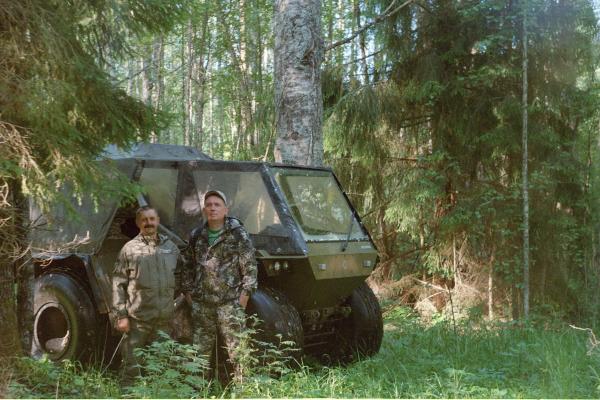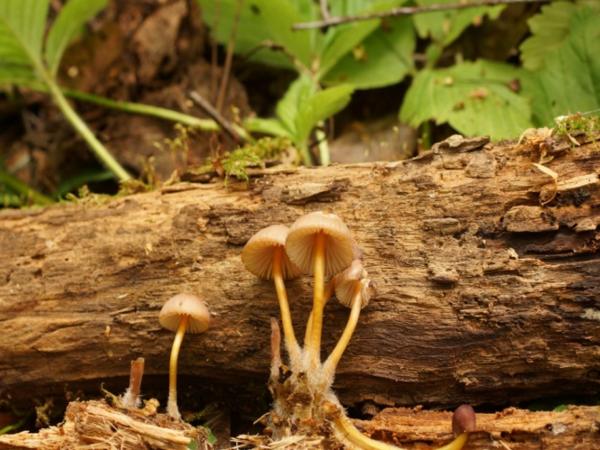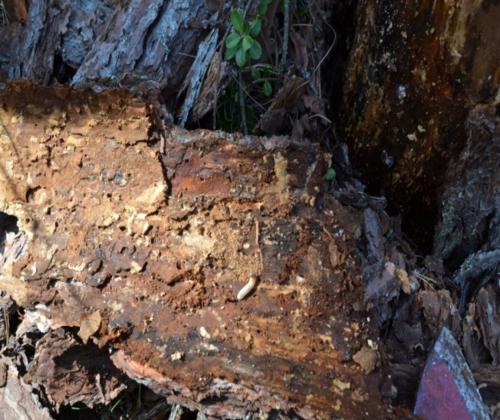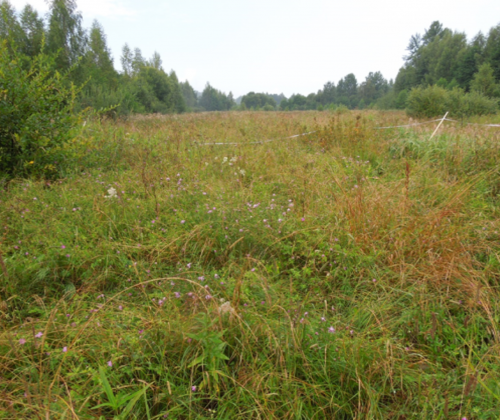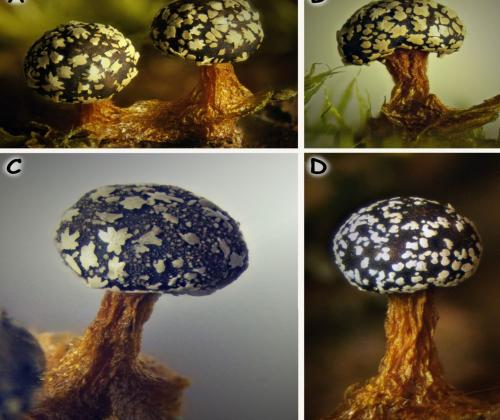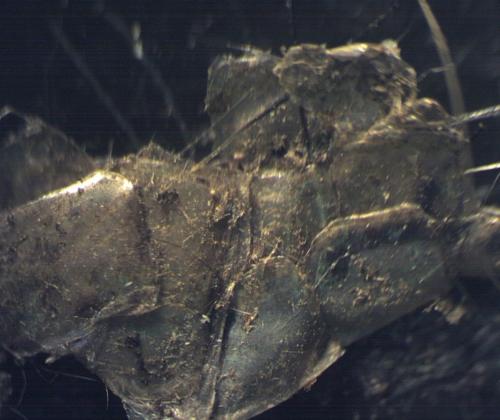One of the key goals of the reserve's work:
Preservation and study of the natural course of natural processes and phenomena, the genetic fund of plant and animal life, individual species and communities of plants and animals, typical and unique ecological systems.
Objectives: implementation of protection of natural areas in order to preserve biodiversity and maintain the natural state of protected natural complexes and objects; organization and conduct of scientific research, including the maintenance of the Annals of Nature; environmental monitoring; environmental education; assistance in training scientific personnel and experts in the field of environmental protection.
Characteristics of the scientific value of the area:
The territory of the Polistovsky Reserve includes the western part of the Polistovsko-Lovatskaya bog system, one of the largest raised bog systems in Europe, consisting of 15 fused bog massifs. More than 20 large lakes and a great number of rivers of the bog system are part of the basins of the Polist and Lovat rivers and occupy a central place in regulation of the hydrological regime of the Northwest region of the Russian Federation. The raised bog system is a unique, the largest natural filter in Europe. There is a constant accumulation of organic matter in bogs. Various kinds of pollutants (radionuclides, heavy metals, chlororganics) are fixed by the organic matter of the bog and remain in the soil together with the peat. Thus, practically distilled water (not counting humic acids) remains at the "exit" from the bog massif, which then enters the basins of the Northwest region: Lake Ilmen, the Neva River and the Gulf of Finland. Unique ecosystems of swamp cenoses provide maintenance of biodiversity, including populations of several species of rare plants and animals included in the Red Book of the Russian Federation. The largest local population of the Eurasian Whimbrel, known in the forest zone of Europe, inhabits here. Southern Golden Plover, Whimbrel and Grey Shrike are common breeders. The bog system is the largest natural reserve of some endangered bird species in the North-West of Russia: European black-throated diver, golden eagle and Russian Ptarmigan. Due to these features of the territory the reserve is interesting for hydrological, climatic, geobotanical and ornithological research.
Международный статус ООПТ:
1. Key ornithological territory of European Russia: Polistovo-Lovatskaya mire system. Date of assignment: 2001. Object code: RU1056 (NV-001).
2. In 1973, the Polistovo-Lovatskaya bog system was included in the list of bogs of the International Project "Thelma", conducted within the framework of UNESCO, as one of the most unique bogs of Russia, requiring immediate protection.
3. The territory of the Polistovo-Lovatskaya Bog System, where the Polistovsky Reserve is located, is included in the Ramsar Convention's Perspective List of Wetlands
- site number: 28.
- wetland type: Xp, U, Tp, O, M.
- Ramsar Convention criteria: 1, 3, 4.
The Polistovo-Lovatskaya system is one of the largest and best preserved raised bog systems in Europe. Its area is about 250 thousand hectares, about half of the territory is being protected. The Polistovo-Lovatskaya system is a watershed-slope bog belonging to the oligotrophic bog system. The massif is multi-elevation, as it was formed as a result of the merger of several independent bogs. And first of all, the Polistovo-Lovatskaya system is an interest as an object of study for bog scientists. In addition to the fact that it is the largest and most well-preserved bog system in Europe, which in itself could be an interest, the bog system itself has a number of features that could be the object of research and study. In particular, studies of the features of the relief for hydrologists may be interesting. A characteristic feature of the Polistovo-Lovatskaya bog massif is the abundance of small rivers, streams and lakes. The channels of most rivers have a complex character (open, sub-moss - flowing under the moss cover, buried - flowing inside the peat deposit). This can also be an object of study.
There are also large lakes which can be interesting to hydrologists, hydrobiologists, algologists and ichthyologists. Large lakes in the massif are located mainly in groups. Within the territory of the reserve there is the northern group consisting of three lakes, Russkoe (390 ha), Mezhitskoe (90 ha) and Kokarevskoe (33 ha) which used to be a united whole. The lakes of the Polistovo-Lovat massif, as well as in general the lakes of high bogs, are characterized by poverty of water calcium, high content of humic substances, poverty of phyto- and zooplankton abundance (from Cladocera and Copepoda).
A very significant part of the bog landscape is a multitude of small lakes scattered among the moss cover and forming ridge-lake or ridge-soil-lake complexes. There is a rare form of Willkommii pine, usually less than 1 m in height, and a form of Pumila, whose broad clumps of pine trees rise 20-40 cm above the moss. Their presence does not disturb the overall impression of no woodland. Beside them, single thin birches (lat. Betula pendula) up to 2.5 m in height also grow. The vegetation association Scheuchzeria marsh dominates in the potholes, often there are potholes with a cover of liverworts, windows of denuded peat. The ridge-pebble complex, confined to the slopes, occupies the largest area of all the complexes of the upper part of the Polistovo-Lovatskaya massif. Also one of the most widespread bog complexes are the marginal swamps, formed in conditions of very poor drainage and abundant water inflow from the upland parts of the bog or from the mineral bank. The most characteristic features of marginal swamps are constant high water encroachment, very flat surface, and almost complete treelessness. In places where the mineral bed is close to the surface of the peat massif, there are quite extensive reedbeds. It is not uncommon to find potholes with bare peat. In this regard, the Polistovo-Lovatskaya bog system may also be of great interest to geobotanists, bryologists and lichenologists, bog scientists (peat research).
There are two types of mineral islands among the marsh massif: high (up to 9 m above the marsh level) of small area and relatively low, with gentle slopes, but often having a large area. Studies of internal-marsh islands are of interest to ornithologists and geobotanists.
In addition, climatological and meteorological studies would also be of interest here, since such a significant area of raised bogs certainly has a significant climate-forming effect. In general, the climate of the Polistovo-Lovatskaya bog system is moderately continental.
The territory of the Polistovsky Reserve may be of interest to entomologists, arachnologists, theriologists and, of course, ecologists, as well as scientists of many other specialties.
В настоящее время действуют следующие договора о сотрудничестве:
- Federal State Budgetary Educational Institution of Higher Professional Education “Pskov State University“
- Federal State Budgetary Educational Institution of Higher Professional Education "Velikolukskaya State Agricultural Academy“
- Federal State Budgetary Educational Institution of Higher Professional Education "Tver State University“
- Federal State Budgetary Institution “Zoological Institute of the Russian Academy of Sciences“
- Federal State Budgetary Institution "Central Forest State Reserve"
- Federal State Budgetary Institution "The A.N. Severtsov Institute of Ecology and Evolution of the Russian Academy of Sciences"
- Federal State Budgetary Institution "The V.L. Komarov Botanical Institute of the Russian Academy of Sciences"
- Federal State Budgetary Educational Institution of Higher Professional Education "St. Petersburg State University"
- University of Helsinki (Finland)
Научные исследования 2021 года:
Research papers - 13:
of which have been fulfilled:
by full-time employees - 1;
by external part-time employees - 8;
under the work contracts - 3;
under a cooperation agreement with the Research Institute - 1.
STUDY OF AGARICOID FUNGI DIVERSITY IN DIFFERENT BIOTOPES OF INTERNAL-BOG ISLANDS AND THE MINERAL BANK OF THE POLISTOVSKY RESERVE
As a result of the work carried out in 2021, 40 circular sampling sites (20 on the internal-bog islands and the mineral bank) were laid. Collection of samples from these sites was carried out, as a result 57 species of agaricoid fungi were identified, 14 of which have not been previously observed in the territory of the reserve.
A comprehensive analysis of diversity on the basis of the data obtained convincingly showed their insufficiency and the need to continue collecting data for at least two field seasons.
INVENTORY OF MYXOMYCETES IN THE POLISTOVSKY NATURE RESERVE AND ITS PROTECTED ZONE
As a result of two expedition trips in 2021, 1019 specimens of myxomycetes sporonoderms were found. At the same time, 11 specimens were not identified and were not included in the general list. 103 species of myxomycetes from 32 genera, 10 families and 5 orders were identified. Twenty-five species were new to the Polistovo-Lovatskaya bog system. Twenty-eight species were found for the first time on the territory of the Pskov Region. Twenty-six species were new for the territory of the Polistovsky Reserve. Thus, taking into account the data of 2018, 2019 and 2020, 158 species of myxomycetes are known for the Polistovo-Lovatskaya bog system.
In 2021, on the territory of the Polistovsky Reserve 697 samples of myxomycetes were collected and 93 species of myxomycetes were found. Thus, during the four years of research 138 species were noted in the Reserve.
INVENTORY OF INTERNAL-BOG ISLANDS OF THE POLISTOVSKY RESERVE
The work began in 2017 with the islands in the northern part of the reserve and continues for the 5th season. The islands we studied in 2021 were probably the most synanthropized (domesticated in the past), as they are located only 1-2.5 km from the native shore. It is likely that they have been used by the population for quite a long time, as not only the vegetation cover, but also the soils have been transformed. Forest communities are secondary, and in the herbage cereals, meadow grasses, nettles, and plants of the old culture were found. On the islands, apple trees are recorded everywhere. Information on the flora of vascular plants of the islands was supplemented. The study of mosses of different substrata was continued. As a result of the studies, the database of geobotanical descriptions was replenished, mosses were identified, and new information about the soils of internal-bog islands was obtained. For the first time during 5 seasons of field work on the islands, we described a rusty podzolic sandy loam on water-glacial sands (Gorodok Island, the top), and previously we had not met a gray-humus (sod) ferruginous light loam soil on sandy loam sediments (Berezovy Island).
CREATION OF THE GIS PLATFORM OF THE POLISTOVSKY RESERVE
The goal of the work is to design and put into operation a GIS-platform based on existing and newly created geodata, which consists of two main blocks (parts): a cloud service and a desktop program. Development and creation of the platform was performed on the basis of ArcGIS software provided under the Environmental Grant Program of Esri Inc. An important step in the implementation of this topic is to train the staff and visiting specialists in competent work with GIS itself and in the transition to paperless collection of geodata (using mobile devices and applications). A total of 107 vector data layers were processed and systematized. 81 layers were successfully recognized and uploaded to the GIS-platform, and 26 layers could not be systematized thematically, or the data in them turned out to be corrupted. As a result, all data are grouped into 9 sections: "Hydrology", "Snow survey", "WGW", "Ecological trails", "Topography", "Cranberry sites", "Grouse counts", "Small mammal counts", "Beaver counts". In addition, a new section and corresponding folder "Photomonitoring" was created, which includes the work with photo traps. In 2022, the plan is to conduct a field season for all scientists using the created GIS. The link to the training videos was sent to all scientific staff by mail, there is time to get acquainted.
JUSTIFICATION OF MEASURES FOR REGIME HAYING OF MEADOWS IN THE POLISTOVSKY RESERVE AND ITS PROTECTED ZONE.
The work began in 2020 and is designed until 2022. The aim is a scientific justification of the regime measures to restore and maintain the biological diversity of meadow communities in the Polistovsky Reserve and its protected area. In 2021, based on the results of the analysis of 63 geobotanical descriptions of meadows of different types in the Polistovsky Reserve and its protection zone, it is shown that the greatest species diversity is preserved in the meadows around the villages Obolonye and Veryazha.
Three valuable areas of meadows of different types in the protected zone of the Polistovsky Reserve were proposed for regime haying activities in 2021.
INVENTORY OF INSECT TAXIDERMY GROUPS IN PINE STANDS IN THE POLISTOVSKY STATE RESERVE
The work started in 2020 and is designed for the years 2020-2022. Based on the comparison of phases of animal and plant development, phenological parallels were constructed. The 2021 season vividly demonstrated the conventionality of the calculation methods and the direct dependence of xylophage activity on the weather conditions of the month. At the end of the season, from the number of precisely defined species we identified typical representatives of stem xylophages inhabiting the forests of Polistovye. In 2021, we carried out a comprehensive forest pathology survey of the territory of the reserve and the protected zone. During the field season, 5 outbreaks of xylophagous mass reproduction were detected and 10 route points were marked within the theme. Analysis of the distribution of centers of mass reproduction of trunk xylophages on the territory of the Reserve was carried out. The survey showed that in addition to damage by stem xylophages of various orders, coniferous and deciduous wood is most intensely affected by fungal and non-infectious diseases. A digest describing typical wood-destroying fungi species will be published based on the results of the survey.
INVENTORY OF HELMINTH FAUNA OF PREDATORY MAMMALS IN THE PROTECTED AREA OF THE POLISTOVSKY RESERVE
The work started in 2021. Helminthoscopic methods were used to study excrement of wild carnivores to determine their parasitic worm fauna on the territory of the Polistovsky Reserve.
Earlier similar work was carried out on the territory of the Reserve to determine the helminth fauna of the polecat, so it will touch upon and develop the results of previous studies. This work represents the first stage in the study of the fauna of parasitic worms of all predatory mammals inhabiting the territory of the reserve.
ANALYSIS OF THE FEEDING SPECTRUM OF MAMMALIAN PREDATORS IN THE POLISTOVSKY RESERVE.
Raccoon dog feces were analyzed for the remains of their victims to determine the feeding spectrum.
The conducted work represents the second stage of the study of feeding of predators in the Polistovsky Reserve.
A brief geographical description of the study area is given. For the route of collection of material is indicated a map with the points of collection of material. The remains of raccoon dog victims are illustrated in detail, and photographs of small mammal hair cuticle impressions are given.
Remains of micromammals, small birds, reptiles, and insects were found in the feces. The most important food for the raccoon dog on the territory of the reserve is small rodents.
INVENTORY OF LANDSCAPE COVER IN THE POLISTOVSKY RESERVE BY REMOTE SENSING METHODS
In modern conditions of global transformations of the nature and climate changes for operative monitoring of ecological processes of various levels, occurring in natural and transformed landscapes the effective method covering landscape structures of the most different scales is required. The analysis of earth remote sensing data (ERS) can be such a method, which is effectively used to study the different-scale units of landscape organization.
One of the basic methods of work with ERS is the procedure of decoding. Decoding of space imagery is the process of identifying, recognizing and determining the characteristics of various area and volume objects represented on it.
The performed work on identification of landscape cover classes of the Polistovsky Reserve showed high efficiency of remote sensing data application in the analysis of sparsely accessible territories. At the same time, some problems were revealed in the course of classification, consisting in the impossibility of high-detailed interpretation of vegetation cover using Landsat images. A more detailed landscape map requires ERS of higher spatial resolution, as well as data from UAV surveys and ground-based field descriptions in "problem points". It is also necessary to optimize the names of landscape classes according to modern geobotanical nomenclature. Nevertheless, the obtained cartographic materials can serve as a reliable source of information when organizing scientific research, act as predictors when conducting spatial modeling, as well as serve the purpose of analyzing the natural dynamics of the bog ecosystem. A sufficiently high quality of classification (Kappa=0.82) indicates the reliability of the landscape classes identified and allowed to clarify the areas occupied by different vegetation formations in the territory of the Polistovsky Reserve.
SURVEY OF THE BROWN BEAR POPULATION IN THE PROTECTED AREA OF THE POLISTOVSKY RESERVE
The brown bear (Ursus arctos) population in the protected area of the Polistovsky Reserve was recorded and analyzed.
Such work on the territory of the Polistovsky Reserve is carried out for the first time.
We obtained data on the number of brown bears in the protected area of the Polistovsky Reserve in 2021 - 16 animals;
2 females;
3 segregates;
4 adult males;
7 individuals, whose sex and age could not be identified.
Based on the analysis and comparison of the data obtained with data from other territories, it can be stated that the brown bear accounting and composition of its population in the Polistovsky Reserve is correct.
NATURAL FOCALITY OF SMALL MAMMAL LEPTOSPIROSIS.
Purpose of work: Identification of natural focality of leptospirosis in the protected area of the Polistovsky Reserve. Such work is carried out for the first time and represents the first stage of research. We made a diagnostic test by polymerase chain reaction of biological samples, obtained from rodents and insectivores for the presence of pathogenic microorganisms Leptospiraspp. At this stage, no representatives of rodents and insectivores with leptospirosis have been identified in the protected area of the Polistovsky Reserve.
EVALUATION OF NUMBER AND TERRITORIAL DEPOSITION OF THE BEAVER (Castor fiber) IN THE PROTECTED AREA OF THE POLISTOVSKY RESERVE
The use of the method of counting the number with differentiated distribution of settlements by "power" allowed to establish the predominance of "medium" (52%) settlements, "weak" and "strong" settlements are found with equal frequency - 13%. In terms of habitat distribution, settlements located on small rivers with mineral banks dominate (72.2%), the second most preferred habitat type is irrigation channals (13%), less preferred are internal-bog lakes (7.4%) and water courses (7.4%). Among dwelling types burrows (68.5%) prevail over huts (31.5%). The data obtained allow us to note a rather high population density of beavers (average distance between settlement centers 1.308 ± 0.223 km), which compares with the eastern part of the Polistovo-Lovatskaya bog system (The Rdeisky Reserve). Genetically, beavers inhabiting the Polistovsky Reserve are represented by highly polymorphic animals without a pronounced spatial structure. Genetic and demecological features testify to the stable state of the reintroduced population.
ECOLOGY OF SMALL RODENTS AND INSECTIVORES
In 2021, counts of small rodents and insectivores on 22 permanent trap-lines located in the protective zone of the reserve were conducted in spring, summer and autumn. 16 trap-lines are located in forest habitats, 5 - in meadow habitats and 1 - in raised bog. In total, 3300 trap-nights were worked. We captured 232 animals from the Rodent group and 21 from the Insectivorous group.
In 2021, the number of rodents of the family Muridae (mice) decreased sharply, especially field mice, which last year accounted for 20% of the total number of rodents. After last year's break, we again encountered the subterranean vole, a species listed in the Red Book of Pskov Region.
The number of the background species of forest ecosystems of the protected area, the red-headed vole, for the second year kept almost at the level of the previous year. Specific mortality in the winter period of 2020/21 was 79%.
Implementation of state environmental monitoring
- Number of measurable environmental parameters - 63
- Number of multi-year (more than 10 years) observation series - 6
In 2021, the following types of environmental monitoring were performed in the reserve:
Meteorological observations with the help of a weather station M-49 M and a handheld rain gauge O-1.
Equipment is located at the scientific production base in the village of Tsevlo. 10 parameters: 1. Daily precipitation, mm, 2. average air temperature, 3. maximum air temperature, 4. minimum air temperature, 5. Relative humidity: average, 6. Wind speed, m/s: average, 7. Wind direction: rumba, 8. Atmospheric pressure - average in mmHg, 9. Dew point, 10. Number of days with precipitation .
Daily observations of the condition of the snow cover at the weather station site.
Observations have been carried out since 2015, measuring 3 parameters: snow cover height, snow density, and water content in snow. In 2021, observations were conducted from 01.01.21 to 24.03.21, from 29.11.21 to the present.
Snow-metering surveys on permanent sites and routes (multi-year series).
They are carried out on the forest and bog routes, each 500 m long, the meadow route, 1 km long, and two bog plots in the Nesvino tract and the adjacent bog massif, located in the territory of the reserve. This sites were laid out for this purpose in 2000. Three parameters are measured: the height of the snow cover, snow density, and the amount of water in the snow. The snow survey period in 2021 lasted from 01.01.2021 to 19.03.2021 at all observation sites.
Observations of bog freezing and thawing regime on permanent areas (multi-year series)
1 parameter. Conducted starting from 2000 on bog snow measuring route and trial plots. The period of works started from the first observation of freezing on the bog and till complete thawing of the bog massif: from 01.01.2021 till 14.04.2021, from 10.12.21 till the present time.
Hydrological monitoring at the water measuring site (multi-year series).
It is carried out since 2002 on the water measuring site with five wells laid by the staff of the State Hydrological. Water level and temperature are measured. Since 2015, measurements are made with automatic water level sensors (Solinst, Levelogger Edge series, model 3001). Sensors were installed on 09.04.2021, removed on 15.11.2021
Measurement of water levels on rivers and streams.
It is carried out at the water gauging stationswhich were set up for this purpose on the Khlavitsa river, the Usadba brook, the rivers Osyanka, Stradnitsa, Plavnitsa, and Lake Tsevlo. On the Usadbinsky creek and the Khlavitsa river, measurements were made by inspectors every 5 days, on the Plavnitsa, Stradnitsa and Osyanka rivers measurements are made with the help of gauges. Gauges were installed on Stradnitsa and Osianka rivers on 09.04.21, on Plavnitsa because of abnormally high water level and impossibility to come to the place of measurements only on 08.07.21 Gauges were taken off on 11.11.2021.
Monitoring the yield of marsh cranberry. Counts of cranberry blossoms and berries (multi-year series). Surveys began in 2000. In 2021, they were conducted on 15 series of permanent survey plots (54 plots), located in 7 different by trophicity and character of vegetation areas of the bog. Seven parameters were determined: 1. Number of flowers on the recording areas,2. Number of conceived berries on the accounting areas, 3. Number of normal berries on record areas, 4. Number of rotten berries on the recording areas, 5. Total number of berries on the recording areas, 6. Average weight of one berry, 7. Productivity kg/ha.
Monitoring of the fruiting of the black crowberry.
Due to reduction of habitats as a result of drainage of bogs, this species is included in a number of regional Red Books. In particular, in the neighboring regions: Smolensk and Tver. Monitoring of the yield of black crowberry was started in 2013 on a series of three sample plots located 800 m to the south-west of the Nesvino village. Five parameters are taken into account: 1. The number of normal berries on the sample plots, 2. The number of rotten berries on the sample plots, 3. Total number of berries on the surveyed areas, 4. Average weight of one berry, 5. Productivity kg/ha.
Monitoring of the population status of the Lathraea squamaria.
Monitoring of the state of the population of the species from the Red Book of the Pskov region in the status "rare", Lathraea squamaria, is carried out in the area to the west of the Obolonie district since 2014. Two parameters are taken into account - the number of individuals and the general condition of plants.
Monitoring the state of the artificial population of Lobaria pulmonaria.
The work began in 2014. In 2020, we continued to monitor the state of the artificial population of Lobaria pulmonaria in the area of the "Xerocomus Path" route.
Monitoring of anthropogenic load on the "Plavnitskoe bog" route.
Started in 2015. Two parameters are taken into account - 1. Recreational degradation of forest phytocenoses, 2. Recreational degradation of bog phytocenoses. The data is gathering on the 4 sample plots, laid in 2015 on forest plots at the beginning of the route and on internal-bog islands, and on 4 sample plots, laid in June 2016 on bog plots on June 23, 2020.
Monitoring of anthropogenic load on the "Xerocomus Path" route.
Started in 2016. 1 parameter is taken into account. 1. Recreational degradation of forest phytocenoses. Material was collected on June 25, 2020 on 2 sample plots laid in 2016 in the forest plots: PP № 1 and PP № 2. PP № 1 is located in a small-leaved forest in the place of a stop of tourists for rest, and PP № 2 - in the place of growth of rare plants and the location of an interesting geological object.
Birds of the "Plavnitskoe bog" route. Assessment of changes associated with recreational pressure.
Monitoring works were started in 2012. The object of the study is the ornithofauna of the ecological route at the section of the bog near the Plavnitsa river of the Polistovsky Reserve. The subject of the study is the species composition and number of birds, trends of their changes under the influence of recreational load (excursions with tourists to the ecological route). In 2021, we conducted a route count of birds on the 15th of May. All birds were counted, regardless of the distance of detection.
As a result of the study, the species composition and the number of birds in the area of the route were determined. The population of 42 species from 7 groups was established. 190 individuals of different species were recorded.
Monitoring of abundance and species composition of Charadriiformes at key sites.
Monitoring work began in 2012 at the key plot in the southwestern part of the reserve, in the bog area to the north of Volchiy Island. The area of the plot is 59.2 ha. The object of the study is birds of the Charadriiformes order, which live in one of the plots of the raised bog in the Polistovsky Reserve, as well as other representatives of the avifauna living together with them. The aim of the study is to trace the dynamics of the fauna, population and spatial distribution in the bog area, to identify the features of their nesting. In 2021 we observed 16 pairs of six species: Eurasian Golden Plover, Whimbrel, Great Spoonbill, and Common Gull. Numbers and species diversity corresponded to long-term averages.
Water and near-water birds counting in the spring and summer period.
The object of the study is ornithofauna of rivers and lakes of the natural monument "Polisto Lake", adjacent to the western border of "Polistovsky Reserve". The subject of the study is species composition and abundance of water and near-water birds, their changes during the spring migration. The aim of the study is to study the dynamics of the species composition and the number of birds of the rivers and lakes during the spring migration.
Monitoring of avifauna of the flood meadow near the Ruchey village.
The aim of the work was to identify the species composition, number and territorial distribution of birds in the flood meadow - a rare ecosystem for our territory on the northeastern shore of Lake Polisto. In February 2013, a site of 23.25 ha was laid in the south of the Ruchey village to carry out researches.
Monitoring of avifauna in overgrown meadows.
The work started in 2012. In the course of the work, bird counts of the overgrown meadow were conducted in April and May 2021.
The species composition (17 species) and the number of birds (64 pairs) in the study area were determined as a result of the surveys. There was a slight decrease in species diversity and numbers of birds compared with the previous year of surveys. The dominant species in recent years remains the same - the Willow Warbler. Regularities of changes in avifauna during ten years were determined.
Monitoring of avifauna of forest stations (multi-year series).
The work was started in 2005. Species composition and number of wintering birds, birds on migration and during the nesting period are observed on two permanent routes: on the route in the spruce-leaved forest (Chitovaya tract, 3.05 km), and in the small-leaved forest (Obolonye tract, 4.1 km).
Monitoring of populations of small rodents and insectivores (multi-year series).
The following monitoring parameters are taken into account: 1. Number of mouse-like rodents, 2. Numbers of insectivores (shrews), 3. Morphometric characters of mouse-like rodents, 4. Morphometric characters of insectivores, 5. Fluctuating asymmetry of craniological characters of mouse-like rodents, 6. Fluctuating asymmetry of craniological characters of insectivores, 7. Helminth infestation in insectivores Work was conducted in 2000-2004, 2005-2006, 2010-2020.
Winter roundup of hunting mammals species.
The surveys have been conducted since 2000. Four parameters are taken into account: . 1. Number of mammal tracks, 2. Visual registration of birds, 3. Species composition of mammals, 4. Species composition of birds. Winter route accounting of animals in the "Polistovsky Reserve" and its protected zone was conducted in the period from February 15 to 19, 2021 by state inspectors of the Department of territorial protection of the reserve. In 2021, the number of routes increased and was 13, with a total length of 124.8 km. 9.9 km were passed in forest lands, 12.9 km - in field lands, 102 km - in wetlands. A total of 13 route accounting cards were filled out, there were no rejected cards.
Monitoring of daily activity of mammals with the help of photo traps.
The work has been carried out since 2014. In 2021, work began on organizing a Photo-Monitoring Network to monitor medium and large mammal species living in the territory of the Polistovsky Reserve and its protected area. A project of the Photo-Monitoring Network in the Polistovsky Reserve was created, with priorities and areas of work identified. The first stage of field works on installation of serviceable photo traps in the Polistovsky Reserve according to the adopted Work Plan was carried out. Estimated equipment for photo-monitoring works in the Polistovsky Reserve for 2022 is prepared.




